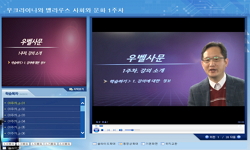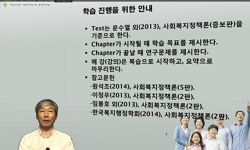In this article, we will examine how the ‘state’ managed the ‘crisis’ of the Spanish flu in 1918~1921 that occurred during the height of the Taisho Democracy Move- ment, and how ‘the public’, which ‘makes up the society’, recognized an...
http://chineseinput.net/에서 pinyin(병음)방식으로 중국어를 변환할 수 있습니다.
변환된 중국어를 복사하여 사용하시면 됩니다.
- 中文 을 입력하시려면 zhongwen을 입력하시고 space를누르시면됩니다.
- 北京 을 입력하시려면 beijing을 입력하시고 space를 누르시면 됩니다.

다이쇼(大正) 일본의 국가와 사회 그리고 유행성감모 = The State, Society, and the 1918 Spanish flu dur- ing the Taisho (大正) Era of Japan
한글로보기https://www.riss.kr/link?id=A108366902
-
저자
박삼헌 (건국대학교)
- 발행기관
- 학술지명
- 권호사항
-
발행연도
2022
-
작성언어
Korean
-
주제어
국가 ; 사회 ; 국민 ; 다이쇼 데모크라시 ; 유행성감모(스페인독감) ; 위생 ; State ; Society ; peaple ; Taishyo Democracy ; Spanish flu ; Hygiene
-
등재정보
KCI등재
-
자료형태
학술저널
-
수록면
79-120(42쪽)
- 제공처
- 소장기관
-
0
상세조회 -
0
다운로드
부가정보
다국어 초록 (Multilingual Abstract)
In this article, we will examine how the ‘state’ managed the ‘crisis’ of the Spanish flu in 1918~1921 that occurred during the height of the Taisho Democracy Move- ment, and how ‘the public’, which ‘makes up the society’, recognized and responded to its state’s crisis management.
Firstly, the ‘society’ and ‘state’ that emerged during the Taisho era served as impor- tant backdrops against which the beginning of the 1918 Spanish flu started to play out. Meanwhile, the quarantine measures of the ‘state’ did not go far beyond the scope of general flu prevention measures. It did not deviate much from the scope of enlightenment in which the people themselves tried to devise preventative measures against this disease. And the key point of these quarantine measures was the recom- mendation to wear a mask. However, ultimately the state’s core quarantine measure of wearing a mask was not successful.
Rather, the refusals of ‘wearing a mask’, which is an ‘enlightenment’ itself of the ‘state’, from the participants of the ‘general election demonstration’ actually symbolizes the very ‘practice’ of the Taisho Democracy Movement, which rejected the ‘state’ that excluded the ‘people’ and insisted on the rights of the ‘people’. It can be said that it is a scene that symbolizes their ‘practice’ more than anything else. In this sense, the mat- ter of ‘whether or not to wear a mask’ during the pandemic period was more than a quarantine measure. It was a political act that showed the clash between the state and society during the Taisho era.
During the second epidemic, vaccination (=vaccine) along with wearing a mask became the main quarantine policy of the ‘state’. However, if ‘vaccination’ is recom- mended at the ‘national’ level, a persuasive explanation of its effectiveness is needed.
However, the issue of the effectiveness of vaccination, in other words, the effective- ness of vaccines manufactured in various types when the epidemiological pathogen is not clearly identified, has expanded beyond the medical community all the way to politics. Furthermore, as the vaccination was carried out by a ‘partisan’ of the Ministry of Home Affairs, the ‘anxiety’ and ‘complaints’ of the ‘people’ were raised. However, during the 3rd epidemic period, the symptoms were difficult to distinguish from the common cold, and it was not very prevalent.
In conclusion, the epidemic of the 1918 Spanish flu that lasted for 3 years resulted in the inability of recognizing the herd community achieved at the terrible expense of the Spanish influenza outbreak amid the clash between the ‘state’ of the Taisho era and the newly discovered ‘society’ and it gradually faded away from ‘people’s memory as the ‘people’ practiced the daily hygiene suggested by the ‘state’ And the void left by the faded memory was filled with the memories of the ‘intense democracy’ that brought on the passing of the General Election Law in 1925 with the power of the ‘people’.
국문 초록 (Abstract)
이 글에서는 다이쇼 데모크라시 운동이 고조되던 시기에 발생한 1918~1921년 유행성감모 유행이라는 ‘위기’를 ‘국가’가 어떻게 관리했고, 그 과정에서 ‘사회를 채 우는 존재’인 ‘대중...
이 글에서는 다이쇼 데모크라시 운동이 고조되던 시기에 발생한 1918~1921년 유행성감모 유행이라는 ‘위기’를 ‘국가’가 어떻게 관리했고, 그 과정에서 ‘사회를 채 우는 존재’인 ‘대중’은 국가의 위기관리를 어떻게 인식하고 대처했는지 살펴봤다.
우선 유행성감모의 유행 시작에는 다이쇼라는 시대에 등장한 ‘사회’와 ‘국가’가 중요한 배경으로 작동하고 있었다. 한편, ‘국가’의 유행성감모 방역 대책은 일반 적인 독감 예방 대책의 범위를 크게 벗어나지 못했다. 국민 스스로 이 병에 대한 예방법을 강구하도록 노력하는 계몽의 범위를 크게 벗어나지 않았던 것이다. 그 리고 그 방역 대책의 핵심은 마스크 착용의 권장이었다. 하지만 마스크 착용이라 는 ‘국가’의 핵심적인 방역 대책은 결과적으로 성공적이지 못했다.
오히려 ‘국가’가 ‘계몽’하는 ‘마스크 착용’을 거부하는 ‘보통선거 데모’ 참가자들 의 행위야말로, ‘국민’을 배제하는 ‘국가’를 거부하고 ‘국민’의 권리를 주장하는 다 이쇼 데모크라시 운동의 ‘실천’을 그 무엇보다 상징적으로 보여주는 한 장면이라 할 수있다. 이런 의미에서 유행성감모 유행 시기의 ‘마스크 착용 여부’는 방역 대 책 이상으로 다이쇼 시기의 국가와 사회의 대립을 보여주는 정치적 행위였다.
2차 유행시기에는 마스크 착용과 함께 예방주사(=백신) 접종이 ‘국가’의 주요 방역 정책이 되었다. 하지만 ‘국가’ 차원에서 ‘예방주사’ 접종을 권장한다고 하면, 그 효과에 대한 설득적인 설명이 필요하다. 그러나 예방주사의 실효성 문제, 즉 유행성감모 병원체가 무엇인지 분명하지 않은 상태에서 여러 종류로 제작된 백 신의 실효성에 대한 문제의식은 의학계를 넘어서 정치권으로 확대되었다. 더군다나 내무성의 ‘당파’에 의해서 백신 접종이 이뤄지면서 ‘국민’의 ‘불안’이자 ‘불만’ 이 제기되었다. 하지만 3차 유행시기에는 그 증상이 보통 감기와 구별하기 어려 운 정도가 많았고 크게 유행하지도 않았다.
이상, 3년간 이어진 유행성감모의 대유행은 다이쇼 시대의 ‘국가’와 새롭게 발 견된 ‘사회’가 대립하는 가운데 유행성감모 창궐이라는 처참한 대가를 치르고 얻 은 집단 면역을 인식하지도 못한 채, ‘국민’이 ‘국가’가 제시하는 일상의 위생을 자 신을 위해 실천하면서 ‘국민’의 기억 저편으로 서서히 사라져 갔던 것이다. 그리 고 그 사라진 기억의 공간은 ‘국민’의 힘으로 1925년에 보통선거법 통과를 쟁취해 낸 ‘강렬한 데모크라시’의 기억으로 채워졌다.
1 박선미, "전염병의 지리학" 갈라파고스 2022
2 데이비드 하비, "자본의 17가지 모순" 동녘 2014
3 앨프리드 W. 크로스비, "인류 최대의 재앙, 1918년 인플루엔자" 서해문집 2010
4 현재환, "마스크 파노라마" 문학과 지성사 2022
5 지나 콜라타, "독감" 사이언스북스 2003
6 秩父宮家, "雍仁親王実記" 吉川弘文館 1972
7 "読売新聞"
8 小田部雄次, "百年前のパンデミックと皇室-梨本宮伊都子妃の見たスペイン風邪-" 敬文舎 2020
9 西村秀一, "現代語訳 流行性感冒: 一九一八年インフルエンザ·パンデミックの記録" 平凡社 2021
10 内務省衛生局, "流行性感冒" 内務省衛生局 1922
1 박선미, "전염병의 지리학" 갈라파고스 2022
2 데이비드 하비, "자본의 17가지 모순" 동녘 2014
3 앨프리드 W. 크로스비, "인류 최대의 재앙, 1918년 인플루엔자" 서해문집 2010
4 현재환, "마스크 파노라마" 문학과 지성사 2022
5 지나 콜라타, "독감" 사이언스북스 2003
6 秩父宮家, "雍仁親王実記" 吉川弘文館 1972
7 "読売新聞"
8 小田部雄次, "百年前のパンデミックと皇室-梨本宮伊都子妃の見たスペイン風邪-" 敬文舎 2020
9 西村秀一, "現代語訳 流行性感冒: 一九一八年インフルエンザ·パンデミックの記録" 平凡社 2021
10 内務省衛生局, "流行性感冒" 内務省衛生局 1922
11 小田部雄次, "梨本宮伊都子妃の日記: 皇族妃の見た明治·大正·昭和" 小学館 2008
12 "東京朝日新聞"
13 "東京日日新聞"
14 速水融, "日本を襲ったスペイン·インフルエンザ: 人類とウイルスの第一次世界戦争" 藤原書店 2006
15 有馬学, "日本の近代4 「国際化」の中の国際日本" 中央公論新社 2013
16 池田一夫, "日本におけるスペインかぜの精密分析" 東京都健康安全研究センタ一 50 : 2005
17 紅野謙介, "文豪たちのスペイン風邪" 皓星社 2021
18 磯田道史, "感染症の日本史" 文藝春秋 2020
19 永井紀之, "愛媛県におけるスペイン·インフルエンザの流行について(二)-「後流行」を中心に-" (404) : 2022
20 永井紀之, "愛媛県におけるスペイン·インフルエンザの流行について(三)" (47) : 2022
21 永井紀之, "愛媛県におけるスペイン·インフルエンザの流行について(一)-「前流行」を中心に-" 403 : 2021
22 "大阪朝日新聞"
23 筒井清忠, "大正史講義" 筑摩書房 2021
24 速水融, "大正デモグラフィ" 文藝春秋 2004
25 上山昭博, "北里柴三郎-伝染病と闘いつづけた男-" 青土社 2021
26 逢見憲一, "公衆衛生からみたインフルエンザ対策と社会防衛-19世紀末から21世紀初頭にかけてのわが国の経験より-" 国立保健医療科学院 58 (58): 2009
27 前澤健, "下伊那のスペイン·インフルエンザ-『南信』の記事からみるその流行-" 72 (72): 2020
28 石原佳子, "スペイン風邪流行と大阪-新聞と統計を中心に-" (73) : 2020
29 栗三直隆, "スペイン風邪の記憶-大流行の富山県-" 桂書房 2020
30 公文豪, "スペイン·インフルエンザと高知県" (251) : 2012
31 伊藤昭弘, "スペイン·インフルエンザと佐賀·小城" (92) : 2022
32 井竿富雄, "シベリア出兵におけるスペイン·インフルエンザの問題" (4) : 2011
33 辻直人, "キリスト教学校とスペイン·インフルエンザ" (11) : 2021
34 杉浦芳夫, "わが国における“スペインかぜ”の空間的拡散に関する一考察" 50 (50): 1977
35 宮内庁, "『昭和天皇実録』第二" 東京書籍 2015
동일학술지(권/호) 다른 논문
-
1876 - 1920년 서울지역의 화재발생과 경성소방조의 활동
- 서울시립대학교 서울학연구소
- 김상옥
- 2022
- KCI등재
-
- 서울시립대학교 서울학연구소
- 김덕원
- 2022
- KCI등재
-
- 서울시립대학교 서울학연구소
- 김창수
- 2022
- KCI등재




 DBpia
DBpia








